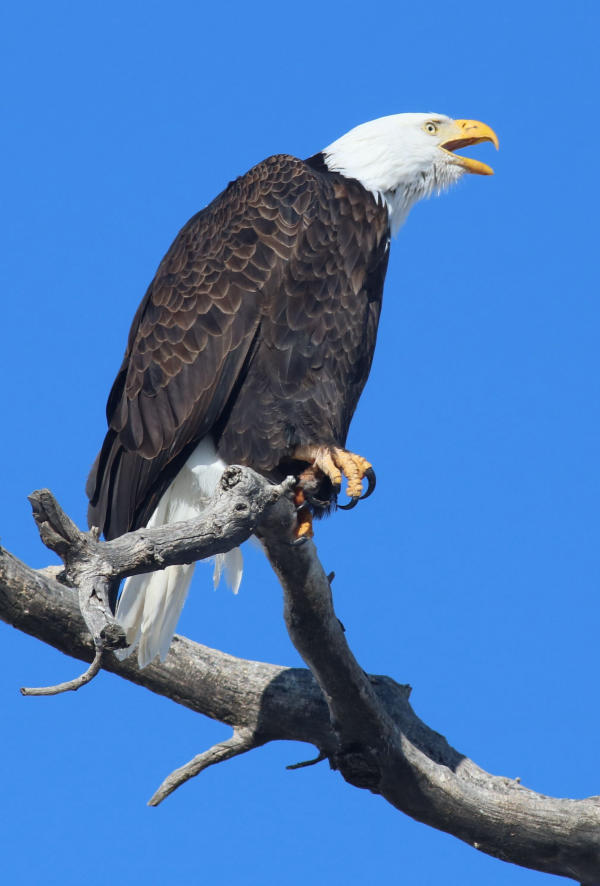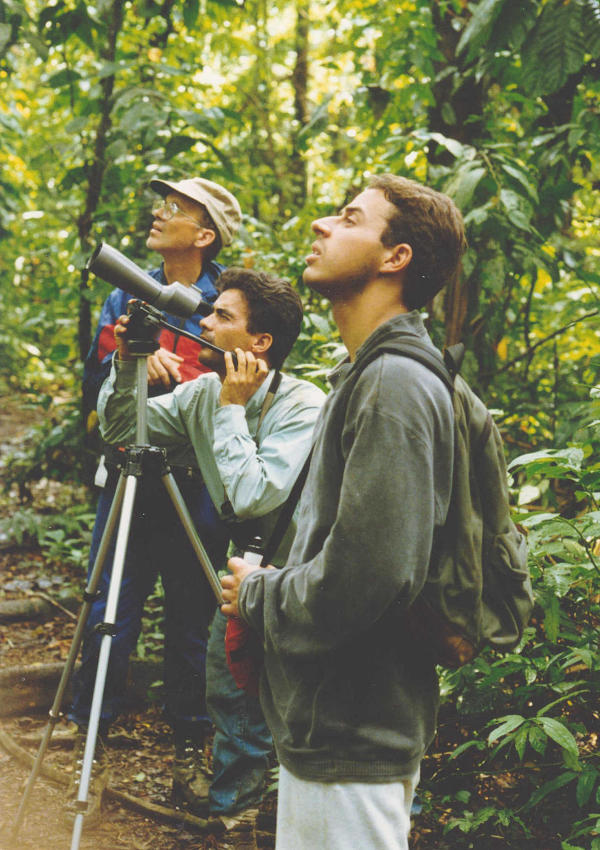
Bald Eagle

Sometimes a straight eyepiece forces an awkward viewing position.
|
We spotted the Bald Eagle flying and were thrilled when it swooped up to land in the top of a snag. The kids and adults on my field trip were giddy, everyone hoping for a look through my spotting scope. I spun the barrel of the scope around and found the eagle. Then I spun around to see who was first in line – a woman who was probably 18 inches shorter than me.
Yikes! I went back to the scope, a straight lens model, and quickly lowered it so she could have a good look. Next in line was a young boy, at least 18 inches shorter than the woman. I collapsed the scope legs so the youngster could see the grand eagle. Then, his Dad, my height at 6 feet 3 inches. Up came the legs . . . Adjusting the scope to the diverse heights of the people on the field trip was inconvenient and wasted time. There must be a better way, I thought.
There is a better way, and it’s a spotting scope using an angled lens that can swivel so viewers of different heights can look through the scope without adjusting its height. Angled lenses offer other advantages. Since you actually look downward through an angled lens, it means you can get away with a shorter tripod, perhaps saving weight. Shorter tripods often also reduce vibration from wind.
Angled lenses also make it easier to spot birds up high or down low. Some birders find it more comfortable to tilt their heads down to use an angled lens, basically mimicking the posture used to read a book. One small disadvantage is that since the lens of an angled model is pointing up at a 45 degree angle, it may collect rainwater or dust while in use.
Learning to find a bird using an angled lens can be challenging, sometimes very challenging; but usually it’s just a matter of practice. During a visit to Hawk Ridge in Duluth, Minnesota, birders using spotting scopes with angled lenses were locating flying raptors faster than I could using my straight lens.
Despite the angled lens advantages, when I’m by myself, I use a straight eyepiece. It’s just more comfortable for me and it’s the system I grew up on. Be sure to check both options before you choose the spotting scope of your dreams. And if you already have a spotting scope, maybe a different eyepiece will help you get the most out of your field trips.
Article by Peter Stangel